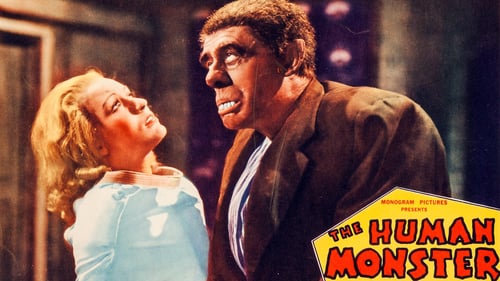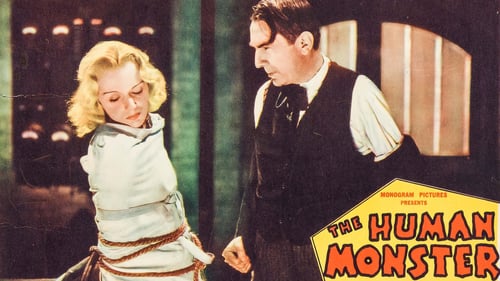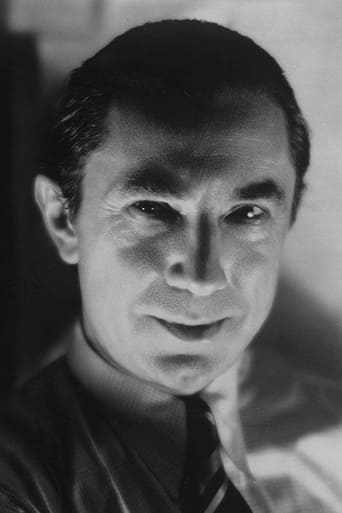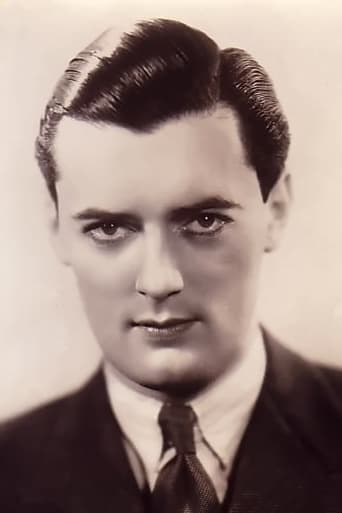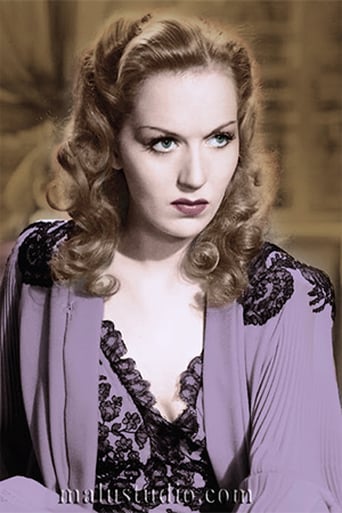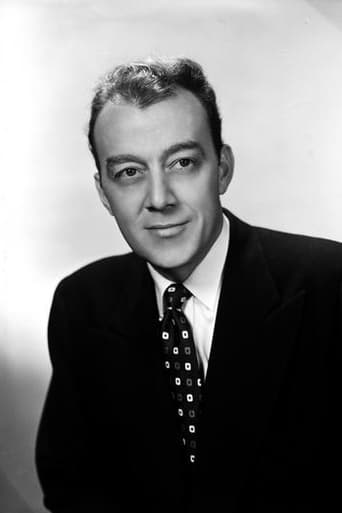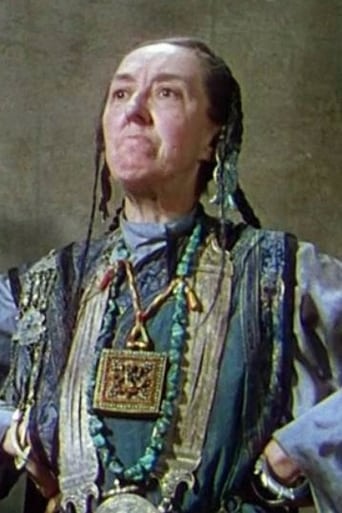VividSimon
Simply Perfect
Humaira Grant
It’s not bad or unwatchable but despite the amplitude of the spectacle, the end result is underwhelming.
Robert Joyner
The plot isn't so bad, but the pace of storytelling is too slow which makes people bored. Certain moments are so obvious and unnecessary for the main plot. I would've fast-forwarded those moments if it was an online streaming. The ending looks like implying a sequel, not sure if this movie will get one
Deanna
There are moments in this movie where the great movie it could've been peek out... They're fleeting, here, but they're worth savoring, and they happen often enough to make it worth your while.
Nigel P
Based on the Edgar Wallace book, 'Dark Eyes of London' features the mighty Bela Lugosi, incongruously surrounded by very British docklands, slums, murky water, and a vast home for the blind.Horror is subjective: what frightens one person may bore another. For some reason, this film fills me with dread. The style of acting, the grainy images and muffled sound only add to this. The atmosphere is one of cruelty, brutality and the most vulnerable in society are subject to these atrocities. The seediness of their surroundings, the extravagance of Bela's performance – every murky thing about this picture gets to me in a way far more polished efforts somehow do not. And it's not even a pure horror – more a thriller caper, with grotesque elements.Anyway, Bela plays a dual role – one, bewigged, wearing black glasses and softly (and very convincingly) dubbed by another (English) actor as blind Dearborn, head of a converted warehouse that is now a home for the blind. He also plays Dr. Orloff, who commits a series of murders for insurance purposes. Surrounded by more mannered, less memorable performers, Bela 'does his thing': some would call it ham, others might enjoy his theatrical playing. I'm definitely in the latter camp – once again, his heightened acting compared to the genteel under-playing of his co-stars is very effective. His portrayal of blind Dearborn is brilliant, his whole deportment is changed, his movements slow and uncertain. This become instantly obvious when Dearborn reveals his true identity, the contrast in his performance is effortless and impressive. The blind are portrayed as tragic, shunned, kindly characters. None more so than monstrous Jake, who is also given the full horror make-up. Played by Wilfred Walter, he shares with Bela an exaggerated menace. The services held in Dearborn Home are eerie sights, with the residents sitting in cheerless silence as a kindly, aged voice escapes Bela – which in itself is a creepy oddity.The character of resident Dumb Lou (Arthur E. Owen) suffers the brunt of Orloff's cruelty. Lou is blind and unable to speak. When he discovers too much about Dearborn's duplicity, Orloff robs him of his hearing too. Using (now) archaic Frankenstein-esque electronic equipment, the helpless little man is strapped down, taunted by Orloff, and has his hearing burnt out, the only reaction being the agitated twitching of his hands. The act is largely unseen, but we hear a distant scream. When we return to the scene, Lou's hands have stopped twitching. It is a horrible moment, as is Orloff's later gleeful drowning of the poor wretch.A smoky morgue, a tearful heroine, mouldy walls, Lugosi's stare, drownings … Director Walter Summers ensures every setting is as downbeat as possible, adding layer upon layer of leaden atmosphere upon an already sombre palette. And I think that's what grabs me about this – the sparingly used horrific incidents are merely icing on this absorbingly bleak cake. An absorbingly bleak cake? I told you this film had an effect on me (the light comic ending almost seems to have been spliced in from another picture).Considering it was the British ban on horror films that helped put the kibosh on many such films stateside a few years before, this is an audaciously (hypocritically?) gruesome thing. The briefly glimpsed images of corpses pulled out of the Thames are surprisingly graphic. Orloff's fate, at the hands of a furious, betrayed Jake is disappointingly brief, and features Bela up to his neck in gulping muddy sludge, and brings to an end an exceptional film. I almost wish the sound and image quality could be cleaned up like the Universal pictures, but such an operation would somehow rob 'Dark Eyes of London' of much of its rich, shadowy ambiance.
Michael_Elliott
The Dark Eyes of London (1939) *** (out of 4) Det. Larry Holt (Hugh Williams) is investigated the bizarre "suicides" of several people who seem to have drowned themselves in the Thames. Most people think suicide but the detective believes something more sinister is going on and everything points to a home for blind people being run by Dr. Orloff (Bela Lugosi). Also known as THE HUMAN MONSTER, this British thriller will probably disappoint some expecting a straight horror film but if you go into it as a murder-mystery with horror elements then you should find yourself entertained. It's easy to see why Lugosi would want to go overseas and make this film and especially when you consider the type of mysteries that were being made in America. This here certainly separates itself from others because of its extremely dark atmosphere and rather bleak storyline. The Edgar Wallace story is a pretty strong one and it makes for an entertaining movie. The atmosphere is certainly extremely rich as the setting at the blind home is just the perfect location to match the mood of the picture. Another major plus is that the murders are a tad bit more sinister and graphic than what we'd typically see. This includes the brute of a killer with his deformed look and sinister moans. There's a scene where he's attacking the lead female character, which is quite thrilling even today as the use of shadows are perfectly executed and this was several years before the whole film noir movement. Williams gives a nice performance in the film as he gets a majority of the screen time and manages to carry the picture well. Greta Gynt is good as the girlfriend and Wilfred Walter is extremely effective as the monster. Then there's Lugosi who is certainly extremely good here. He perfectly captures the "good" character but when he switches it's also handled well by the actor. The entire "twist" in the story is pretty obvious today but I'm going to guess that those in 1939 were more caught off by it. With that said, if Lugosi had been able to use different voices and get past that thick accent (dubbing is used here) then it's clear he could have done so much more. THE DARK EYES OF London has some flaws including a few pacing issues and some ill-advised comedy but there's still plenty to enjoy here.
Zbigniew_Krycsiwiki
Here, Lugosi plays an insurance underwriter using blind men from a nearby sanitarium to commit murders of the recently insured- with Lugosi the beneficiary and the bodies unceremoniously dumped into the Thames River in attempt make them look like drownings. Scenes of the blind men sulking around the place, effectively filmed in high contrast black-and-white, with only ambient noises are creepy enough, and their subsequent emotionless and remorseless killings are even more chilling. Lugosi is menacing and threatening as ever here, using the blind men as murder weapons (he also has a memorable, and for his character, appropriate, death in the Thames River) Good work also from the surprisingly serious cop on the case who ultimately solves the mystery. The film also benefits from mercifully avoiding the comic relief of having a bumbling nitwit cop/ news reporter, so prevalent in many of these old B-horrors.
Prichards12345
This was one of three films Bela Lugosi came to Britain to make, the others being Mystery Of The Mary Celeste (known in the US as The Phantom Ship) and the dreadful Mother Riley Meets The Vampire (AKA My Son The Vampire). Bela apparently enjoyed making Mary Celeste and Dark Eyes as he was much better paid than usual and treated with respect. This movie finds Lugosi at the top of his game, and it contains a few genuine creeps.Based on a story by Edgar Wallace, the plot concerns a police investigation into bodies turning up in the Thames. Shades of Murders In The Rue Morgue where Bela dumped his used corpses in the Seine! He plays the head of an insurance company cashing in on his customers by bumping 'em off and collecting the dosh! He also has links to an institute for the blind, which he uses as a front for his criminal organisation.The blind, brutish killer Lugosi uses to murder his victims is a little too similar to Karloff's monster in Frankenstein, with a make-up job that is over the top. But he's menacing for all that and there are a few echoes of Karloff in The Old Dark House as well, driven to grief-stricken madness when he realises his boss has drowned his best friend. Not a wise move on Lugosi's part!To summarise this a taut and effective thriller - an early British horror classic - years before Hammer films came along and cornered the market. Don't expect a camp Lugosi flick in the vein of Devil Bat, though. This is put across with sober conviction.

